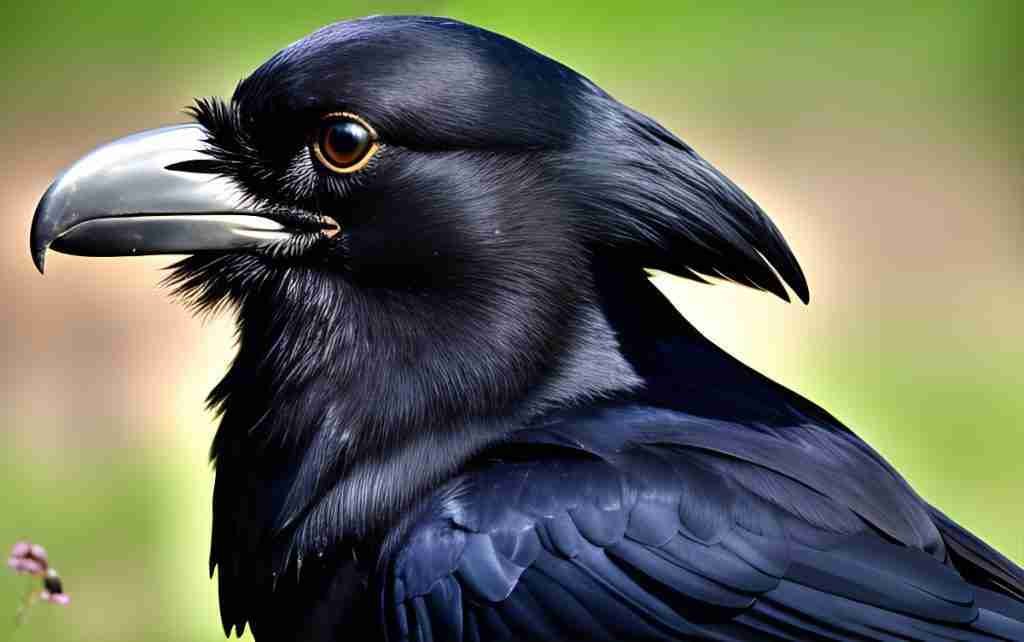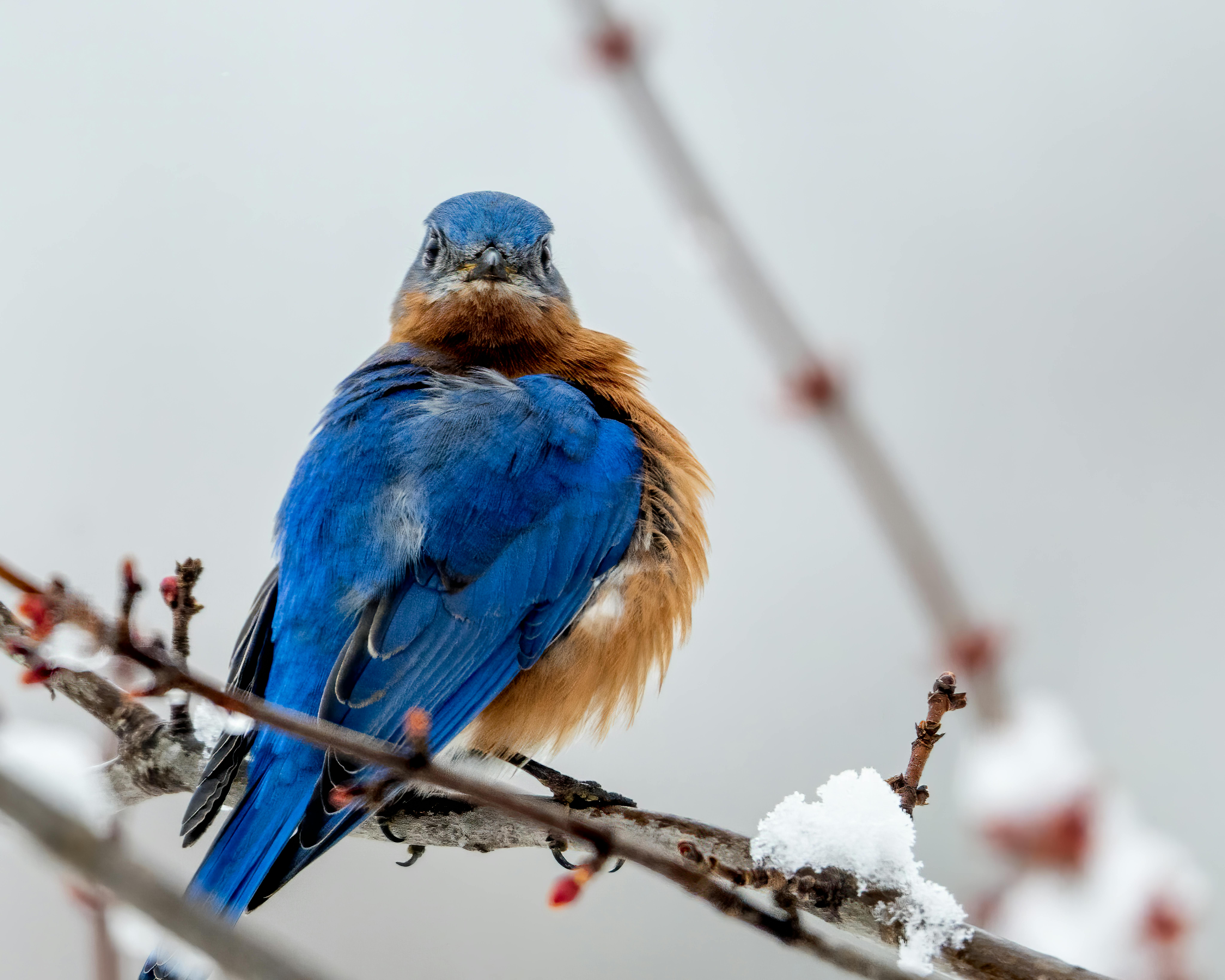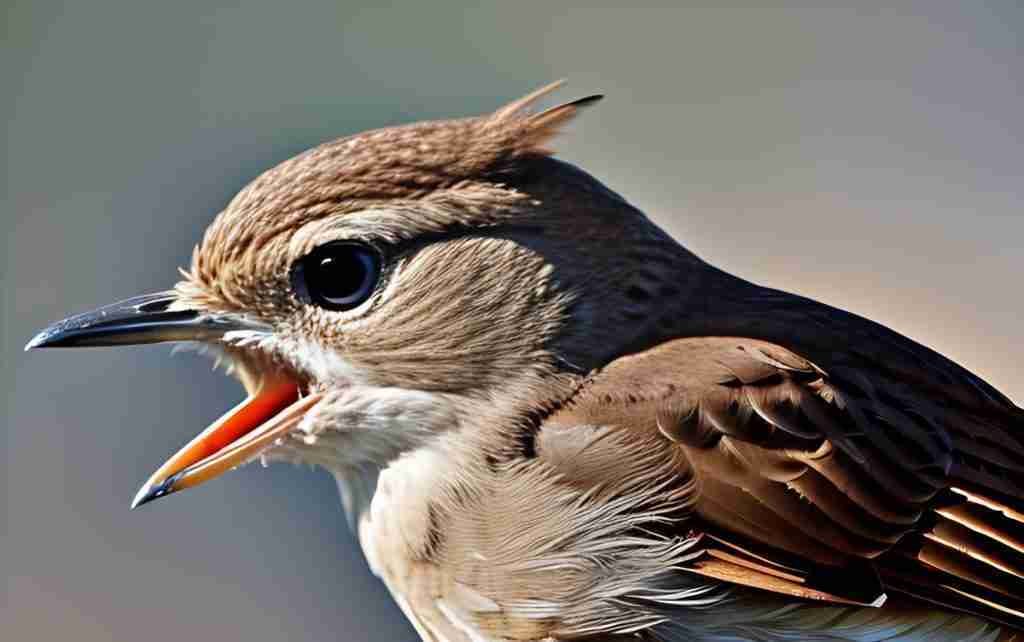Imagine waking up to the melodious symphony of birdsong filling the air, a delightful chorus that signals the start of a new day. Have you ever wondered at what time these feathered friends begin their serenade? In the captivating article, “The Morning Chorus: What Time Do Birds Wake Up?”, we delve into the fascinating world of avian daily routines and explore the varying wake-up times of our feathered companions. From the early risers who welcome the first light of dawn to the late sleepers who prefer a leisurely morning, discover the secrets behind the harmonious alarm clocks of the natural world.
The Importance of the Morning Chorus
Birdsong is a beautiful and melodic form of communication that occurs every morning as the sun rises. It serves numerous purposes for birds, including communication, territory defense, and mating strategies. Understanding the significance of the morning chorus can give us a deeper appreciation for the avian world that surrounds us.
Birdsong as a Communication Tool
Birds use their songs as a means of communication with other members of their species. They can convey various messages through their songs, such as establishing territory, attracting mates, or warning of potential dangers. Each species has its own unique repertoire of songs, allowing them to identify one another and establish social bonds.
Birdsong as a Territory Defense
The morning chorus also plays a crucial role in defending territory. When birds sing, they are not only communicating with other birds but also expressing ownership of a particular area. By claiming their territory through song, birds deter potential intruders and maintain their exclusive access to vital resources such as food and nesting sites.
Birdsong as a Mating Strategy
One of the primary reasons birds sing in the morning is to attract a mate. Male birds often sing complex and elaborate songs to demonstrate their fitness and attract a female partner. The quality and complexity of a male bird’s song can indicate his genetic superiority and ability to provide for offspring. Female birds listen attentively to these songs and use them to choose their potential mates.
Factors Affecting Bird Wake-Up Times
Bird wake-up times are influenced by various factors, including seasonal variations, geographical differences, and species-specific behaviors. Understanding these factors can provide insights into the timing of the morning chorus.
Seasonal Variations
With the changing seasons, the length of daylight hours fluctuates. Birds are highly attuned to these changes, and their wake-up times adapt accordingly. During the summer months when daylight is longer, birds tend to awake earlier to take advantage of the abundant sunlight for foraging and other activities. In contrast, during the winter months when daylight is scarce, birds may delay their wake-up times to conserve energy.
Geographical Differences
The wake-up times of birds can also vary depending on their geographical location. Birds inhabiting regions closer to the equator tend to wake up earlier than those in regions further away. This is due to the consistent length of daylight near the equator throughout the year. In contrast, birds in higher latitudes experience greater variation in daylight hours, leading to differences in their wake-up times.
Species-specific Behaviors
Different bird species exhibit unique behaviors and preferences when it comes to waking up. Some species are known to be early risers, waking up before dawn to establish their territories or engage in early morning feeding. Others may have specific wake-up times based on their feeding habits or environmental factors. Understanding these species-specific behaviors can give birdwatchers valuable insights into when and where to observe different bird species.
[/et_pb_text][et_pb_image src=”https://afeathertogether.com/wp-content/uploads/2023/09/76aqwp2t0vFUadu0uhq2-4-t1i5z.jpg” title_text=”76aqwp2t0vFUadu0uhq2–4–t1i5z” _builder_version=”4.22.1″ _module_preset=”default” global_colors_info=”{}”][/et_pb_image][et_pb_text admin_label=”3″ _builder_version=”4.22.1″ _module_preset=”default” global_colors_info=”{}”]
Birdsong and Circadian Rhythm
Birds, like humans, have internal clocks that regulate their sleep-wake cycles known as circadian rhythms. These rhythms are influenced by external factors such as light and temperature, which can impact a bird’s wake-up times and the timing of their morning chorus.
The Role of Light in Bird Wake-Up Times
Light is one of the most important cues for birds’ internal clocks. As the sun begins to rise, the increasing light triggers a cascade of hormonal changes in birds, signaling the start of a new day. This hormonal response stimulates birds to wake up from their sleep and start vocalizing. The correlation between light and bird wake-up times is particularly evident in the dawn chorus, where birds sing most vigorously during the early hours of daylight.
The Influence of Temperature
Temperature also plays a role in bird wake-up times. Cold temperatures in the early morning can cause birds to delay their wake-up times to conserve energy. As temperatures rise, birds become more active and vocalize to establish their presence and attract mates. The interplay between temperature and wake-up times highlights the adaptability of birds to their environment and the importance of favorable conditions for their morning chorus.
How Birds Adapt to Changing Seasons
Birds are remarkably adaptable creatures, and they adjust their wake-up times according to seasonal changes. As winter approaches and temperature and food availability decrease, some birds may enter a state of torpor, reducing their activity and delaying their wake-up times. This adaptation allows them to conserve energy during periods of limited resources. Conversely, during the breeding season, birds often wake up earlier to engage in courtship rituals and maximize their chances of successful reproduction.
Typical Wake-Up Times for Common Bird Species
While specific wake-up times can vary based on geographic location and individual behavior, several common bird species have well-documented wake-up times. Here are some examples:
American Robin
The American Robin is known for its early morning wake-up time. Typically, it starts singing around dawn, making its presence known to establish its territory and attract a potential mate.
Song Thrush
The Song Thrush is another early riser, with its melodic song ringing through the air shortly after the break of dawn. Its rich and varied repertoire is a testament to its dedication in attracting a mate and proclaiming its territory.
House Sparrow
House Sparrows are social birds that form large flocks, particularly in urban areas. They wake up early, often before sunrise, and their cheerful chirping can be heard throughout the morning.
Red-winged Blackbird
The distinctive call of the Red-winged Blackbird can be heard before sunrise during the breeding season. Its song serves both as a territorial display and a means to attract a mate.
Blackbird
Blackbirds have a reputation for being early morning singers. Their melodic and flute-like songs can be heard as early as the first light of day, signaling their territory and potential availability for mating.

Birds and Sunrise: The Dawn Chorus
The dawn chorus is a majestic symphony of birdsong that occurs in the early morning hours, just before sunrise. This phenomenon has fascinated naturalists for centuries and offers valuable insights into avian behavior and biology.
Why Do Birds Sing at Dawn?
Birds sing at dawn for several reasons. Firstly, the pre-dawn hours offer optimal acoustic conditions, as the air is still and sound travels more efficiently. Secondly, the early morning hours are crucial for establishing territory and attracting mates, making it an ideal time for birds to assert themselves vocally. Lastly, the dawn chorus is influenced by hormonal changes triggered by the increasing light levels, signaling the start of a new day for the avian world.
The Purpose of the Dawn Chorus
The dawn chorus serves multiple purposes for birds. Firstly, it allows birds to communicate with one another, establishing their presence and claiming their territories. By singing in unison, birds can create a chorus of sound that serves as a form of audio signage, allowing neighboring birds to recognize the boundaries and reduce the likelihood of territorial disputes. Additionally, the dawn chorus plays a role in mate attraction, with male birds using their songs to showcase their genetic superiority and entice potential mates.
Benefits and Costs of Early Morning Singing
While the dawn chorus offers numerous benefits to birds, it also comes with costs. Singing at dawn requires a significant expenditure of energy, and birds must balance this energy investment with their other daily activities such as foraging and reproduction. Additionally, singing early in the morning can attract unwanted attention from predators, increasing the risks associated with vocalizing during this time. Birds have adapted various strategies to mitigate these costs, such as adjusting their song output based on environmental conditions and paying attention to the presence of potential threats.
Differences in Birdsong Across Geographic Regions
Birdsong exhibits considerable variation across different geographic regions around the world. Factors such as habitat, climate, and evolutionary history contribute to these divergent bird vocalizations.
North America
North America boasts a rich diversity of bird species and consequently a wide range of birdsongs. From the haunting melodies of the Hermit Thrush to the lively tunes of the Northern Mockingbird, each region in North America has its own unique avian symphony.
Europe
Europe is home to a plethora of bird species that fill the air with song. Birds such as the Nightingale, Skylark, and Blackcap contribute to the vibrant chorus, each species imprinting its distinct audio signature on the European landscape.
Asia
The vast continent of Asia is populated by an astonishing array of bird species, each with its own unique vocalizations. From the resonant calls of the Japanese Bush Warbler to the enchanting songs of the Asian Fairy-bluebird, Asian bird vocalizations showcase the diversity and richness of the region.
Africa
Africa is renowned for its diverse and captivating birdlife, with countless species adding their voices to the chorus. The Lilac-breasted Roller, African Fish Eagle, and Hadada Ibis are just a few examples of the countless melodic voices that contribute to the African soundscape.
Australia
The unique wildlife of Australia is no exception when it comes to avian vocalizations. The Laughing Kookaburra, Superb Lyrebird, and Rainbow Lorikeet are just a few of the remarkable species that fill the Australian skies with their song, creating a symphony unique to the continent.
The Influence of Human Activity on Bird Wake-Up Times
Human activity, particularly in urban areas, has had a significant impact on bird wake-up times. The introduction of artificial lighting, noise pollution, and altered breeding cycles have all played a role in disrupting the natural rhythms of avian life.
Urbanization and Artificial Lighting
Urban areas are characterized by bright lights that illuminate the night sky. These artificial lights can have a profound effect on bird wake-up times. Birds that are exposed to constant artificial lighting may have their circadian rhythms disrupted, leading to altered wake-up times and reduced singing activity. This disruption can have serious consequences for avian behavior and can impact their ability to communicate effectively.
Noise Pollution and Disturbance
Urban environments are also associated with high levels of noise pollution, which can be detrimental to bird wake-up times. Constant noise from traffic, construction, and other human activities can mask birdsong and interfere with their communication and territory defense. Birds may delay their wake-up times or reduce their singing activity in response to excessive noise disturbance, affecting their reproductive success and overall well-being.
Altered Breeding Cycles
Human activities such as deforestation and habitat destruction have altered the breeding cycles of many bird species. Changes in habitat availability and food resources can lead to shifts in the timing of breeding and consequently impact wake-up times. Birds may be forced to wake up earlier or later depending on the availability of suitable nesting sites and food sources. These altered breeding cycles can have cascading effects on the entire ecosystem, disrupting avian populations and their interactions with other species.
Advancements in Birdsong Research
The study of birdsong has witnessed remarkable advancements in recent years, thanks to technological innovations and increased interest in avian behavior. Researchers have developed various tools and techniques to study birdsong and gain insights into its functions and complexities.
Technological Innovations for Studying Birdsong
One significant advancement in birdsong research is the development of bioacoustic monitoring techniques. These techniques use specialized equipment to record and analyze bird vocalizations, allowing researchers to study their patterns, frequencies, and other acoustic characteristics. Automated sound recognition algorithms have also been developed to identify and classify bird species based on their vocalizations, providing valuable information on species diversity and abundance.
The Future of Birdsong Research
The field of birdsong research holds great potential for future studies. Researchers continue to explore new technologies and methods to better understand the intricacies of avian communication and behavior. Genetic studies and neurophysiological techniques may shed light on the evolutionary origins and underlying mechanisms of birdsong. Additionally, interdisciplinary collaborations between ornithologists, ecologists, and computer scientists may lead to further breakthroughs in our understanding of the morning chorus and its ecological significance.
Tips for Birdwatchers: Best Times to Observe Birds and Their Morning Chorus
Birdwatching is a rewarding hobby that allows us to appreciate the beauty and diversity of birds. To maximize your birdwatching experience, consider the following tips regarding the best times to observe birds and their morning chorus.
Early Morning Birdwatching
The early morning hours, just after sunrise, are often the best time for birdwatching. During this time, birds are most active, engaging in vocal displays and foraging for food. The dawn chorus reaches its peak, offering a unique opportunity to observe and identify various bird species.
Ideal Weather Conditions
Bird activity can be influenced by weather conditions, so it is important to choose the right time to go birdwatching. Mornings with calm and mild weather are often favored by birds as they provide optimal conditions for foraging and vocalizing. Sunny days with a gentle breeze tend to be ideal for birdwatching, as birds are more active and easier to spot.
Choosing a Suitable Habitat
Different bird species thrive in different habitats, so selecting the right location is crucial for successful birdwatching. Research the preferred habitats of the bird species you wish to observe and visit those areas during their peak activity times. Wetlands, forests, meadows, and coastlines are just a few examples of diverse habitats that attract various bird species.
Conclusion
The morning chorus is a captivating symphony that plays out every day, highlighting the remarkable communication and behavior of birds. By understanding the importance of the morning chorus, the factors influencing bird wake-up times, and the ecological significance of birdsong, we can develop a deeper appreciation for these avian melodies. As we venture into the world of birdwatching, armed with knowledge and an appreciation for the natural world around us, let us embrace the joy of the morning chorus and revel in the wonders of the avian realm.


